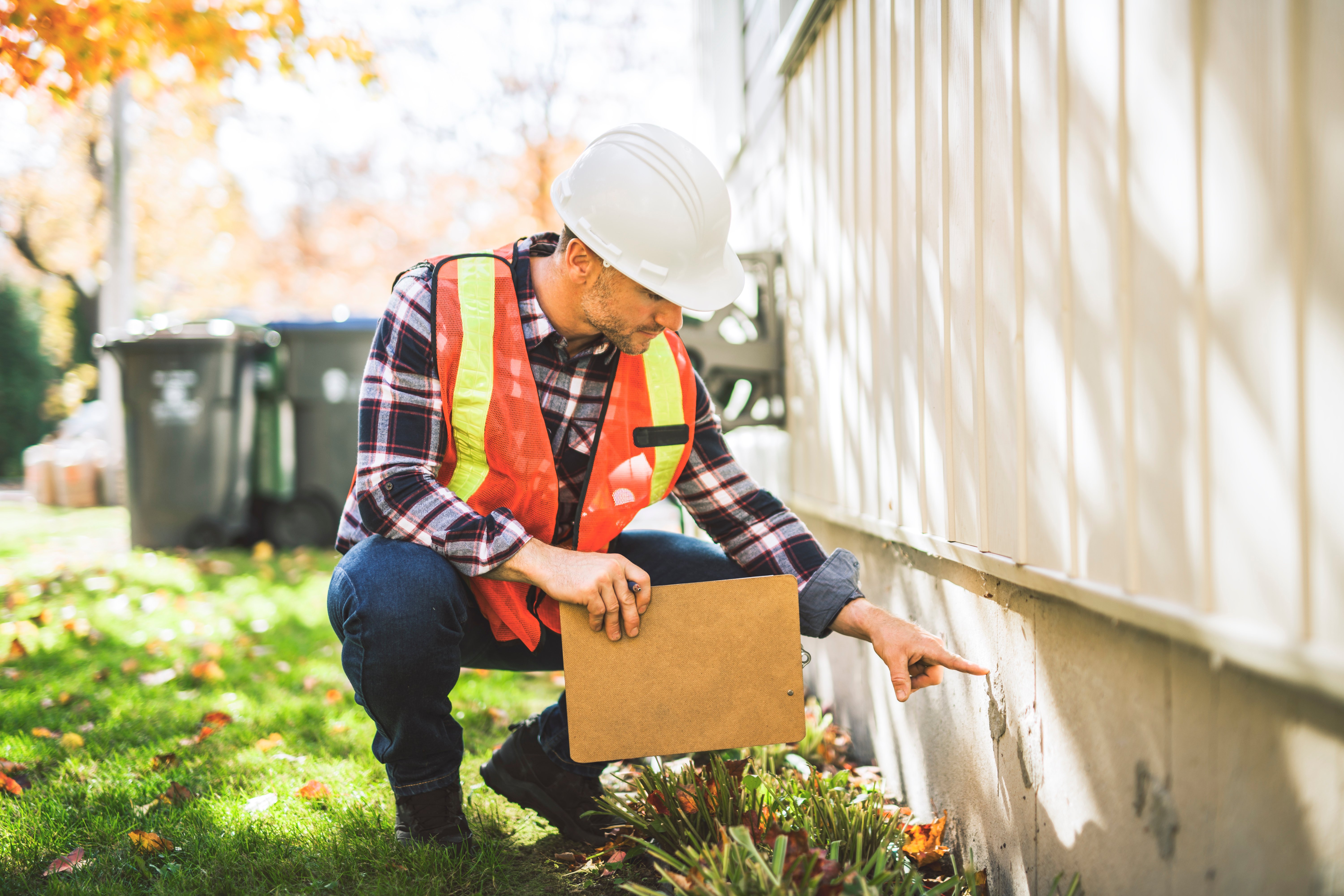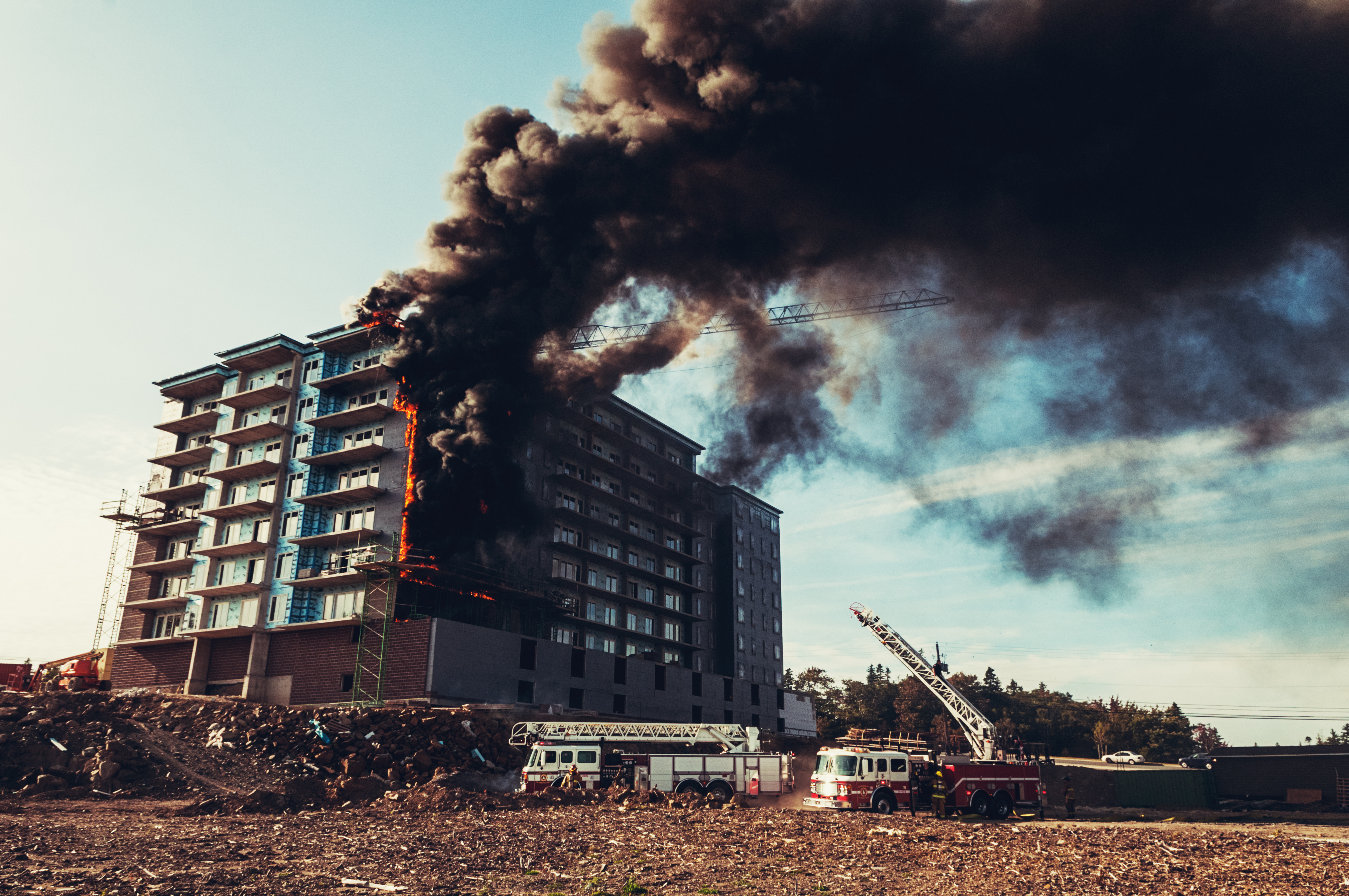Water damage is one of the most common insurance claims among HAI Group policyholders. The impact of water intrusion in a multifamily setting is both dangerous and costly—it can cause potential injuries due to structural issues such as a ceiling collapse, create dangerous mold conditions, and damage equipment and tenant property.
“With water damage, it’s a slippery slope,” said HAI Group Senior Risk Control Consultant Nicklaus Mayo. “It’s tough to dry out, which can cause mold. Water gets in every crack and crevice, making it hard to know exactly where it went.”
If even the slightest water intrusion issue isn’t remedied immediately, it can spread and create additional issues throughout a property. For instance, a water issue on an upper floor in a high-rise can damage the elevator and electrical equipment, creating a much larger insurance claim.
So, where should you start when it comes to water damage prevention? Here’s a rundown of the most overlooked and avoidable causes of water damage in multifamily properties.
Unattended plumbing
From leaking faucets and sinks to backed-up drains and unmaintained boilers, what may seem like minor plumbing issues on the surface can cause more significant water issues over time.
Mayo said that when he conducts property inspections, it’s not uncommon to find significant water damage that can be traced back to overlooked minor issues. Property managers and maintenance teams are stretched thin and have had to work around safety measures during the COVID-19 pandemic. When it’s safe to do so, Mayo said he suggests housing organizations “put boots on the ground and get people out there to really inspect properties.”
“Get in crawl spaces, get in the attics,” he said. “Find these minor issues and try to fix them immediately, if you can, before they become a bigger problem.”
Potential plumbing issues include:
- Equipment drip pans: Used to protect against leaks and are commonly found below ceiling water heaters, air conditioning units, washing machines, and other equipment where dripping may occur. If improperly installed or maintained, issues can arise. To prevent leaks, check drip pans periodically. If they’re full, look for leaks at the pipe fittings, drain valves, and temperature-pressure relief valves—tighten or replace them as needed.
- Driplines: Used to move water collected in drip pans, typically from air conditioning units. The water moves away from the unit and is discharged outside. If the drip line is clogged, water can overflow and damage the unit or building. Clogs are typically related to poor maintenance, lack of an appropriate drain slope, or flooding—schedule regular inspections of your air conditioning units to identify and dripline issues. Signs include a non-working air conditioning unit, standing water, a foul smell, a full drip pan, and water damage.
- Water supply lines: Whether your properties use copper, cast iron, or PVC lines, it’s critical to conduct regular inspections of your supply line system, even in the absence of suspected issues. Check all accessible plumbing lines and systems near any problem areas. Small leaks or surface stains may mean a more significant issue is lurking.
Consider investing in water leak detectors to identify leaks before they become a problem, Mayo said.
Small cooking fires
How does a cooking fire (or any fire, for that matter) correlate to water damage? Mayo—also a career firefighter—said a single fire suppression sprinkler head in a multifamily property could release between 8 and 40 gallons of water per minute (read our resource dedicated to addressing fire-related water damage).
Let’s be clear—sprinklers are required in most multifamily settings to save lives. Residents should never be allowed to remove or tamper with fire suppression systems. Sprinkler systems should be carefully maintained by property management. They should only be shut off as part of pre-planned maintenance activities in coordination with local fire officials.
About half of all reported home fires in the U.S. are caused by cooking, according to the latest National Fire Protection Association (NFPA) report on residential cooking fires. Here are some additional findings from the report:
- Cooking fires caused an estimated $1.2 billion in damage between 2014-2018.
- Cooking fires are twice as likely to occur in apartments than in one- and two-family homes.
- Most cooking fires are minor but occur in apartments where sprinkler systems are installed.
- Unattended cooking is by far the leading factor in cooking fires.
When combined, the above factors make minor cooking fires a water damage threat in multifamily settings, especially in high-rise buildings where water can drain into lower-level apartments, Mayo said.
Luckily, there are canister devices—such as these from Auto-Out Cooktop Fire Protection— designed to extinguish unattended cooking fires before they spread from the stovetop. These fire prevention canisters help decrease the likelihood that a fire spreads enough to create dangerous conditions or trigger a unit’s sprinkler system.
Kelli Esposito, a certified apartment supplier at Auto-Out, said stovetop fire suppression canisters could prevent a considerable amount of water damage. A fire marshal recently told her about a cooking fire that started in a condo and caused the sprinkler system to go off.
“The water caused over $1 million in damages and repairs, not to mention the residents were displaced, and many of their keepsakes were ruined,” Esposito said. “It was heartbreaking to hear. Had the condo association had a product like Auto-Out installed above the stovetop, it might have put out the cooking fire before the sprinkler system activated.”
A $38 investment (the cost of a pair of Auto-Out stovetop canisters for HAI Group members) “could have potentially saved them millions,” she added. “Something as simple as Auto-Out might really make a big difference.”
Roof damage
Roof systems are vital in the preservation of a building’s structural integrity. Even the smallest pierce or puncture caused by storm damage or standing water can lead to serious water damage and big repair bills. Flat roof systems with poor drainage and sloping pose an even more considerable risk.
Gutters and downspouts support roof-water runoff when stormwater would otherwise pool on a roof’s surface. If these drainage pathways are obstructed, water can expose any vulnerability in the roof system.
Mayo recommends inspecting roof coverings and interiors twice annually, in addition to after major storms and before every new season.
“Monitor the moisture content in the space between the roof and ceiling, and inspect the underside of the roof covering from the attic, if possible,” he said. “Don’t rely on what you can see outside since small punctures are often hidden in an exterior-only inspection.”

Winter conditions in warmer climates
Frozen pipes and ice dams are an annual concern for property managers in cold-weather states, yet they still result in considerable insurance claims. Winter conditions can be devastating in warmer climates, where buildings often lack proper insulation.
When pipes freeze unchecked, they bulge until bursting, resulting in water damage and displaced residents. An ice dam is a ridge of ice that forms at the edge of a roof and prevents melting snow (water) from draining off the roof. The water that backs up behind the dam can leak into a building and cause damage to walls, ceilings, insulation, and other areas.
“Property managers in warm states may not be aware of the signs of ice dams and frozen pipes and how to mitigate these issues properly,” Mayo said.
The most common pipe freezes occur in unheated interior areas like basements, crawl spaces, and exterior walls with water supply lines. Consider placing ordinary thermometers in hard-to-heat rooms, close unnecessary openings, and make provisions for monitoring unattended facilities. Mayo said water flow sensors could help identify frozen pipes before it’s too late. If the device no longer senses flowing water in a pipe (a sign that the pipe froze), it can alert maintenance staff.
If a pipe bursts, shut off the water (know where the water shut-off valve is located, so it’s not a mystery during an emergency). If the burst is near electrical switches or fuse boxes, turn off the electricity in that area. Contact a licensed plumber to help remedy the problem and remove as much water as possible. Consider calling a remediation vendor for assistance.
To identify ice dams, look carefully at the icicles around the exterior of your buildings. If they are confined to the gutters, and there is no water trapped behind them, an ice dam has likely not formed. Check for water stains or moisture in attic spaces or exterior walls on the uppermost floor. Stains or moisture may indicate that an ice dam has formed and water has penetrated the roof membrane.
If an ice dam is found, melt it by filling a nylon stocking with calcium chloride ice melt. Place the stocking vertically across the ice dam to melt a channel through the dam. If you try this, make sure you can safely position the ice melt on your roof, and make sure to use calcium chloride, not rock salt. Rock salt will damage your roof. Also, be aware that shrubbery and plants near the gutters or downspouts may be damaged. Get professional help. If you cannot safely reach the roof, avoid using a ladder in snowy and icy conditions.
To prevent ice dams, ensure that attics are adequately insulated, and there is no significant heat loss through the roof. Clean all gutters of any debris before the colder weather to maintain drainage and prevent pooling ice from freezing in the gutter.
Bottom line
A sound maintenance program—one that includes regular inspections, timely repairs, and meticulous documentation—can go a long way toward eliminating or reducing water intrusion. It can also help you defend your organization against claims of improper maintenance should they arise.
If you ever experience any type of water damage, no matter how minor, make sure it is documented, including photos, and contact your insurance carrier.
Contact our Risk Control and Consulting team for more resources and answers to your housing organization’s risk-related questions.
Interested in learning more about the coverage solutions we offer? Connect with a member of our Account Services team.
This article is for general information only. HAI Group® makes no representation or warranty about the accuracy or applicability of this information for any particular use or circumstance. Your use of this information is at your own discretion and risk. HAI Group® and any author or contributor identified herein assume no responsibility for your use of this information. You should consult with your attorney or subject matter advisor before adopting any risk management strategy or policy.
HAI Group® is a marketing name used to refer to insurers, a producer, and related service providers affiliated through a common mission, management, and governance. Property-casualty insurance and related services are written or provided by Housing Authority Property Insurance, A Mutual Company; Housing Enterprise Insurance Company, Inc.; Housing Specialty Insurance Company, Inc.; Housing Investment Group, Inc.; and Housing Insurance Services (DBA Housing Insurance Agency Services in NY and MI).

.png)





